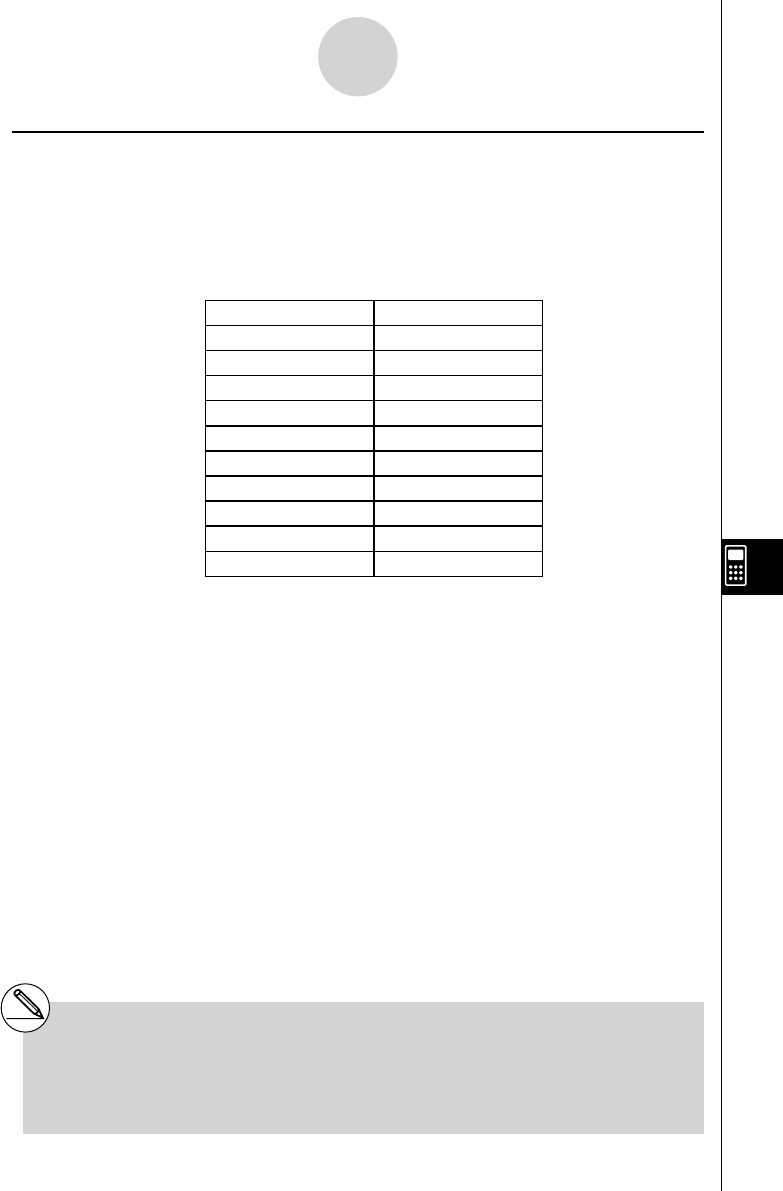User's Manual
Table Of Contents
- Quick-Start
- Precautions when Using this Product
- Contents
- Getting Acquainted— Read This First!
- Chapter 1 Basic Operation
- Chapter 2 Manual Calculations
- Chapter 3 List Function
- Chapter 4 Equation Calculations
- Chapter 5 Graphing
- 5-1 Sample Graphs
- 5-2 Controlling What Appears on a Graph Screen
- 5-3 Drawing a Graph
- 5-4 Storing a Graph in Picture Memory
- 5-5 Drawing Two Graphs on the Same Screen
- 5-6 Manual Graphing
- 5-7 Using Tables
- 5-8 Dynamic Graphing
- 5-9 Graphing a Recursion Formula
- 5-10 Changing the Appearance of a Graph
- 5-11 Function Analysis
- Chapter 6 Statistical Graphs and Calculations
- Chapter 7 Financial Calculation (TVM)
- Chapter 8 Programming
- Chapter 9 Spreadsheet
- Chapter 10 eActivity
- Chapter 11 System Settings Menu
- Chapter 12 Data Communications
- Appendix

20070201
9-4-10
Inputting and Editing Cell Data
k Inputting a Constant
An expression or value that you input without an equal (=) in front of it is called a “constant”,
because the value is not affected by anything outside of the cell where it is located.
If you input a math expression as a constant, the cell shows its result. A “Syntax ERROR” will
occur if an expression uses an incomplete or illegal syntax, or if its result is a list or matrix.
The following table shows various types of constants and the results they display.
Constant Displayed Result
2005 2005
7+3 10
sin 30 0.5
sin X+1 *
1
1.5
AX *
1
*
2
60
dim {1,2,3} 3
1=0 0
1>0 1
sin Syntax ERROR
{1,2,3} Syntax ERROR
*
1
When 30 is assigned to variable X and 2 is
assigned to variable A.
*
2
A character string like AX is treated as a series
of variables (page 2-2-1).
To have a character string treated as text, start it
with a quote mark (").










